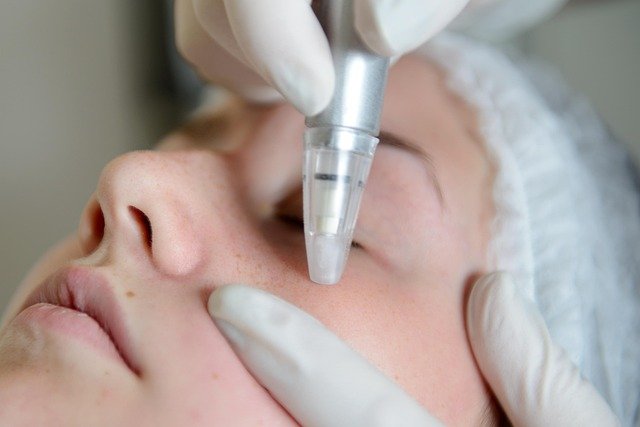Complete Guide to Modern Laser Skin Rejuvenation Essentials
Discover how modern laser skin treatments can refresh your complexion and address a wide range of concerns from fine lines and sun damage to acne scars and unwanted hair. This comprehensive guide explains treatment types, what to expect during sessions, preparation tips, costs, and recovery advice to help you make informed choices about skin rejuvenation.

Laser procedures have changed the way dermatology and aesthetic medicine tackle common skin concerns. By concentrating specific wavelengths of light on targeted tissue, modern lasers can improve texture, tone, and appearance while minimizing harm to surrounding skin. Whether you are trying to soften wrinkles, fade pigmentation, or reduce scarring, laser options offer tailored approaches with measurable results.
Which skin issues can be improved with laser treatment?
Laser therapies are versatile and effective for a variety of conditions. Common indications include:
- Fine lines and wrinkles around the eyes, mouth, and forehead
- Sun-induced discoloration and age spots
- Acne scars and post-surgical scarring
- Uneven pigmentation and rough skin texture
- Enlarged pores and skin laxity
- Persistent redness, rosacea, and visible blood vessels
- Unwanted hair removal
- Tattoo fading and removal
Different devices are designed for specific problems. Ablative lasers remove the outer skin layers to stimulate intense collagen remodeling; non-ablative systems heat deeper layers without disrupting the surface; intense pulsed light (IPL) addresses color irregularities; and fractional lasers treat microscopic columns of tissue, speeding healing while improving tone and texture.
What happens during a typical treatment session?
Most appointments follow a predictable flow. The provider will cleanse the area and, if needed, apply a topical anesthetic to reduce discomfort. Session length depends on the device and treatment area, ranging from around 15 minutes for spot treatments to more than an hour for full-face resurfacing.
During the procedure, patients commonly report sensations likened to a rubber band snapping or a warm prickling. Pain levels vary by laser type and individual tolerance; providers may offer cooling methods or local anesthesia for more aggressive procedures. For many conditions, a series of sessions spaced over weeks or months produces the best outcome, while certain high-intensity treatments may require fewer visits.
How should you prepare for laser skin rejuvenation?
Proper preparation helps lower risks and optimizes results. Key steps include:
- Avoid direct sun exposure and tanning for at least two weeks before treatment to reduce complications.
- Stop topical retinoids and other strong exfoliants several days to a week prior, according to your provider’s instructions.
- Tell your clinician about all medications, supplements, and medical history, particularly blood thinners, photosensitizing drugs, or a history of cold sores.
- Arrive with a clean face; remove makeup, lotions, and perfumes before the session.
- Plan treatments for cooler seasons if possible, when sun exposure is easier to control.
Your clinician will give specific pre-treatment rules based on the type of laser and your skin type.
Typical costs and session estimates
| Treatment Type | Average Cost Range | Sessions Needed |
|---|---|---|
| Fractional Laser | $1,000 - $2,500 | 3-5 sessions |
| IPL Treatment | $400 - $600 | 4-6 sessions |
| CO2 Laser | $2,000 - $4,000 | 1-2 sessions |
| Non-ablative Laser | $800 - $1,500 | 4-6 sessions |
Prices, rates, or cost estimates mentioned in this article are based on the latest available information but may change over time. Independent research is advised before making financial decisions.
Costs depend on geographic location, practitioner expertise, facility type, and the complexity of the treatment plan. Consult multiple reputable clinics for quotes and ask about package pricing, expected maintenance, and any included follow-up care.
Recovery expectations and aftercare
Healing time varies with treatment intensity. Mild procedures may produce redness and slight swelling for a few hours to a couple of days; more aggressive resurfacing can cause several days to weeks of visible recovery. Follow these aftercare principles:
- Keep the treated area protected from direct sunlight and use a broad-spectrum SPF daily.
- Maintain gentle hydration with recommended moisturizers and avoid irritants such as exfoliants, acids, and retinoids until cleared by your provider.
- Follow any cleansing and topical medication instructions given by your clinician, including antiviral prophylaxis when applicable.
- Avoid picking, scratching, or aggressive scrubbing while skin is healing to reduce the risk of infection and scarring.
- Attend all scheduled follow-up appointments to monitor progress and address complications early.
Adhering to aftercare guidance promotes faster recovery and better long-term outcomes.
Choosing the right treatment and provider
Selecting an appropriate laser and an experienced practitioner are two of the most important factors in achieving safe, satisfying results. Ask about the clinician’s training, before-and-after photos for similar skin types and conditions, and how complications are managed. A qualified provider will assess your skin type, medical history, and cosmetic goals to recommend a tailored plan that balances efficacy with downtime and risk.
Laser technology offers powerful tools for skin rejuvenation, but individual results vary based on skin type, the severity of concern, and adherence to preparation and aftercare. Multiple sessions are common for many procedures, and realistic expectations help patients evaluate progress.
This article is for informational purposes only and should not be considered medical advice. Please consult a qualified healthcare professional for personalized guidance and treatment.






